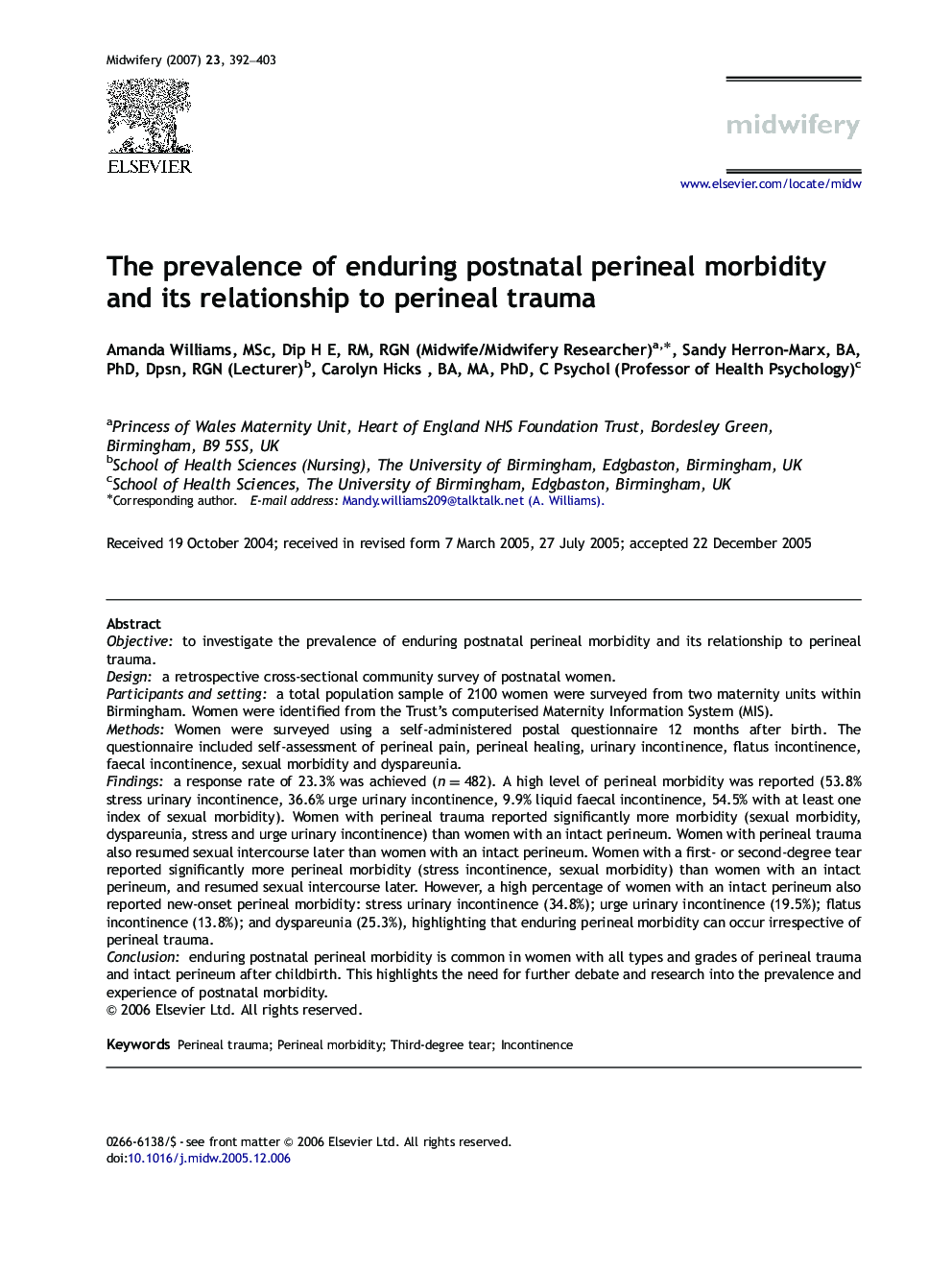| کد مقاله | کد نشریه | سال انتشار | مقاله انگلیسی | نسخه تمام متن |
|---|---|---|---|---|
| 1085369 | 951354 | 2007 | 12 صفحه PDF | دانلود رایگان |

Objectiveto investigate the prevalence of enduring postnatal perineal morbidity and its relationship to perineal trauma.Designa retrospective cross-sectional community survey of postnatal women.Participants and settinga total population sample of 2100 women were surveyed from two maternity units within Birmingham. Women were identified from the Trust's computerised Maternity Information System (MIS).MethodsWomen were surveyed using a self-administered postal questionnaire 12 months after birth. The questionnaire included self-assessment of perineal pain, perineal healing, urinary incontinence, flatus incontinence, faecal incontinence, sexual morbidity and dyspareunia.Findingsa response rate of 23.3% was achieved (n=482n=482). A high level of perineal morbidity was reported (53.8% stress urinary incontinence, 36.6% urge urinary incontinence, 9.9% liquid faecal incontinence, 54.5% with at least one index of sexual morbidity). Women with perineal trauma reported significantly more morbidity (sexual morbidity, dyspareunia, stress and urge urinary incontinence) than women with an intact perineum. Women with perineal trauma also resumed sexual intercourse later than women with an intact perineum. Women with a first- or second-degree tear reported significantly more perineal morbidity (stress incontinence, sexual morbidity) than women with an intact perineum, and resumed sexual intercourse later. However, a high percentage of women with an intact perineum also reported new-onset perineal morbidity: stress urinary incontinence (34.8%); urge urinary incontinence (19.5%); flatus incontinence (13.8%); and dyspareunia (25.3%), highlighting that enduring perineal morbidity can occur irrespective of perineal trauma.Conclusionenduring postnatal perineal morbidity is common in women with all types and grades of perineal trauma and intact perineum after childbirth. This highlights the need for further debate and research into the prevalence and experience of postnatal morbidity.
Journal: Midwifery - Volume 23, Issue 4, December 2007, Pages 392–403